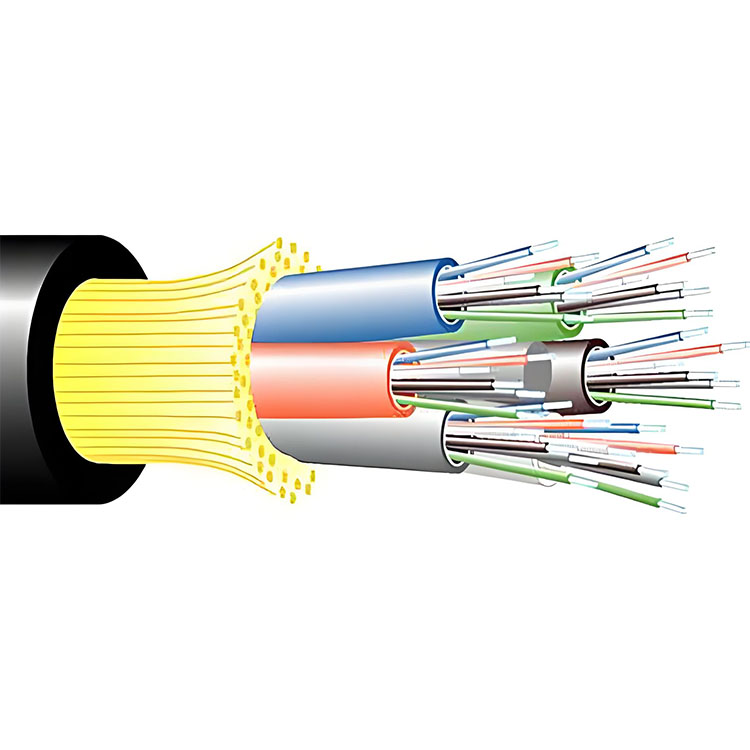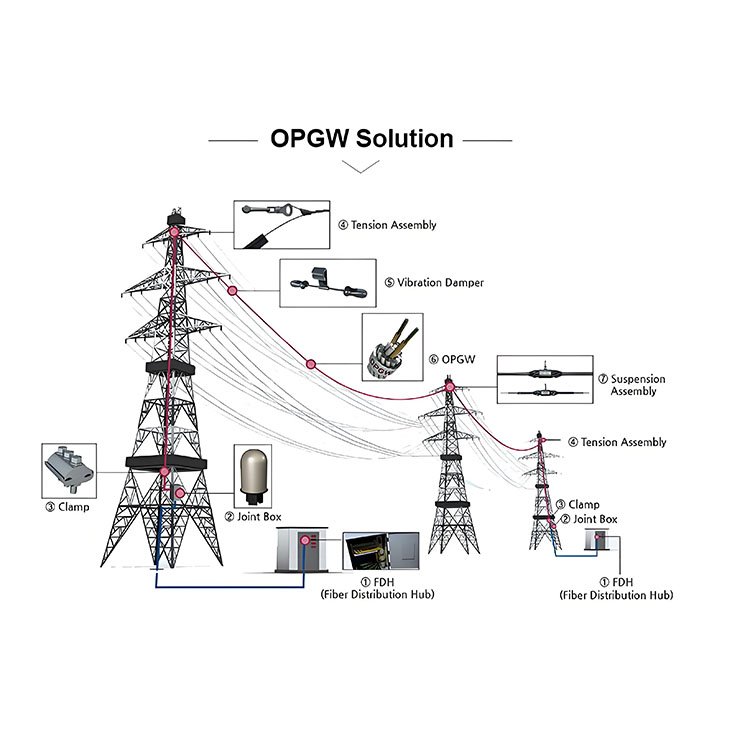Ⅰ. Core structure
·Fully insulated material: no metal, no electrical interference, safe and reliable.
·Strong self-bearing performance: the interior is reinforced with aramid yarn or fiberglass, and the maximum span can reach 200 to 700m.
·Loose tube or ribbon cable core:
·Center loose tube: oil paste is injected into the fiber core, which is light and cheap;
·Twisted structure: suitable for long-distance and high-reliability scenarios, optional double-layer sheath, high load-bearing.
 |
Ⅱ. Main advantages
1. No metal, no need for grounding/binding.
2. Lightweight and high-strength: only 200-250kg per kilometer (12-18mm diameter), strong resistance to wind and snow.
3. Low deployment cost: no additional support structure is required, transmission towers are used directly, and live construction can be used.
4. Strong long-distance transmission capability: single-mode optical fiber with 1310/1550nm band can reach 100km without relay.
Precautions and limitations
·Higher cost: more expensive than traditional cable pulling.
·Requires professional construction team to install and difficult to maintain.
·When crossing the terrain requirements, the tension, arc and deflection must be strictly calculated to avoid the core strain exceeding 0.2%.
·Vulnerable to external forces (such as lightning strikes or freezing), vibration or protection design is required according to the area.
Ⅲ.Typical application scenarios and suggestions
Scene |
Suitability |
Notes |
≤110kV Existing lines |
High matching |
Only single layer of sheath is needed |
≥220kV New/UHV lines |
Be wary of electric field induction |
Use OPGW more often, ADSS is not recommended |
Urban FTTx branch line laying |
Quick establishment |
Saves support costs |
Long span in rural or mountainous areas |
Economical and efficient |
Ideal solution for supporting bridge-type overhead paths |
Parameter table (example)
·Number of cores: 2–144 cores
·Material:
·Aramid yarn or FRP reinforced core.
·PE or anti-tracking (AT) sheath.
·Diameter/weight:
·Single sheath: 8–12mm, double sheath: 12.5–18mm;
·Weight 200–250kg/km.
·Tensile load: 4–50kN (different for different models).
·Maximum span: 700m (slightly different depending on the model).
·Applicable temperature range: –40℃ to +70℃, cold/heat strain design required.
|
|
IV. Summary of selection suggestions
1. Clarify the use environment: power transmission level, climate, span distance.
2. Select the structure: the central tube is light; layer twisting + double sheath is more stable.
3. Confirm the mechanical parameters: tension, deflection, span, wind and ice load.
4. Select the number of fiber cores: reserve according to future network capacity.
5. Supporting construction equipment: vibration isolators, lightning protection, special tension tools, etc.
Summary
ADSS optical cable has become the preferred solution for urban communication expansion, rural broadband coverage, and power communication branch line construction due to its strong self-bearing capacity, high anti-interference, and low-cost deployment characteristics. However, its design and installation process has extremely high requirements for mechanical and electrical specifications and must be performed by an experienced engineering team. In short, if conditions permit, ADSS is a "plug and play" and efficient optical fiber solution.
Post time: 2025-06-21 17:49:56

